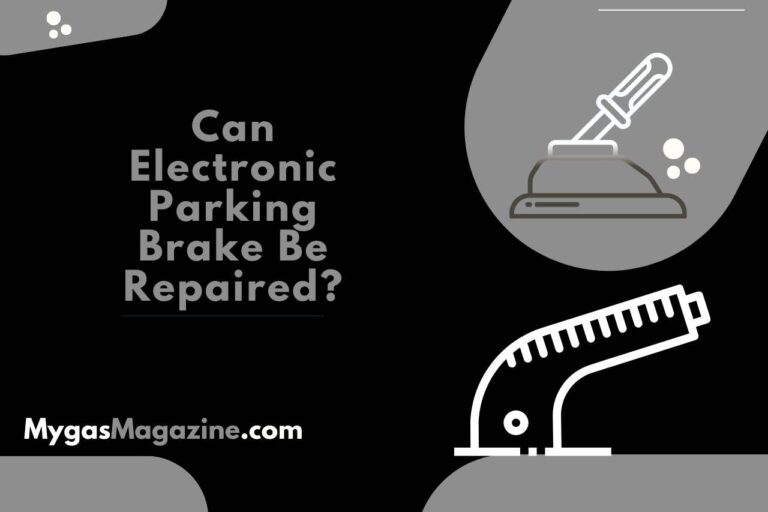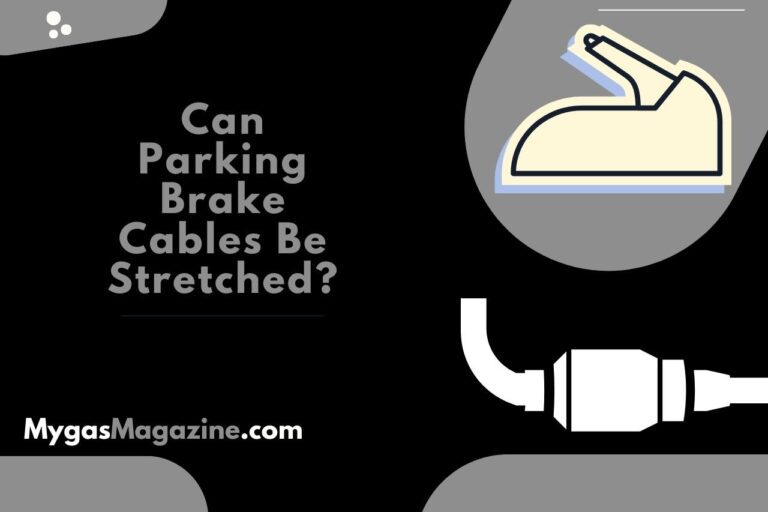Best Brake Fluid Alternative For Your Vehicle
While traditional brake fluids like DOT 3 and DOT 4 are commonly used, drivers may come across instances where they want to find some other brake fluid alternative due to various reasons, including emergencies, environmental concerns, and performance enhancements.
People use a solution of water and soap as an alternative to brake oil in emergency situations, but this is something that we don’t recommend using in the long run. We will explain everything in detail. Keep scrolling!
Can You Use Water and Soap Solution to Substitute Brake Fluid?
If you have no access to any other brake fluid substitute, you can consider using a solution made from water and soap as a temporary solution in an emergency. However, using a water and soap solution as an alternative to brake fluid is not recommended. In addition, it is not a safe or effective long-term solution.
Water and soap do not have the necessary properties to function as brake fluid and can lead to brake system damage. However, yes, to navigate your vehicle to a safe place and stop it, you can use water and soap solution as a temporary solution.
How to Create Water and Soap Solution as a Substitute for Brake Fluid?
If using the soap and water mixture is the only option you have right now, here is how to create this temporary substitute for brake fluid in an emergency.
1st Step
Start by mixing a small amount of water with liquid soap. The soap should be mild and not contain any harsh chemicals or additives. It should be free of abrasive materials, strong acids, or solvents.
2nd Step
There is no precise ratio, but you may start with a mixture of about 90% water and 10% soap. The goal is to create a solution that is slightly soapy but mostly water.
3rd Step
Fill the brake fluid container with an adequate amount of the mixture while substituting the brake fluid to stop your vehicle in a safe place.
Why You Should Not Soap and Water as a Permanent Brake Fluid Substitute?
Here is why we don’t recommend using soap and water as a permanent brake fluid substitute.
Lack of Lubrication
Brake fluid contains additives that lubricate the braking system components. Soap and water do not provide the necessary lubrication, which can lead to increased wear and potential damage to the entire braking system of your vehicle.
Corrosion Issues
Soap and water can cause corrosion of metal components in the braking system. Prolonged use can lead to leaks and reduced braking performance.
Lower Boiling Point
Brake fluid has a high boiling point to withstand the heat generated during braking. The soap and water mixture has a much lower boiling point. This means the soap and water mixture can vaporize under high temperatures.
When using these types of brake fluid alternatives, there is a possibility of facing brake fade and loss of braking power. This is an imminent risk you would face if you happen to drive for a considerable time using soap and water. We hope there is nothing left for us to explain the safety concerns that arise when this happens.
Compatibility Issues
Brake fluid is specifically formulated to be compatible with the rubber seals and hoses in the braking system. Soap and water may not be compatible and can cause deterioration of these components over time.
What is Brake Fluid Made of?
Brake fluid is typically made of a mixture of glycols or glycol ethers, along with various additives to improve its performance characteristics. These additives help to increase the boiling point, reduce corrosion, and provide lubrication for the braking system components.
That said, different types of brake fluid, such as DOT 3, DOT 4, and DOT 5.1, have slightly different formulations, but they all contain similar basic ingredients. We have explained these at the bottom of the article.
Best Brake Fluid Alternatives
Silicone-based brake oil, mineral oil, water-based brake oil, and vegetable-based brake oil are some of the best brake fluid alternatives you can consider.
While traditional brake fluid is recommended for optimal braking performance and safety, these are a few alternatives to brake fluid we recommend.
We must say that these alternatives may not be suitable for all vehicles and should be used with caution. Here are a few options:
Silicone-Based Brake Fluid
Silicone-based brake fluid is a popular braking fluid alternative for those looking for a more durable option. It has a higher boiling point than traditional brake fluid, which can reduce the risk of brake fade.
Pros and Cons of Using Silicone-Based Brake Fluid
Using silicone-based brake fluid as a substitute for traditional glycol-based brake fluid has both pros and cons. Here are some of the key points that you should know.
Pros
- Silicone-based brake fluid has a higher boiling point than traditional brake fluid. This is essential when it comes to reducing the risk of brake fades under heavy braking conditions.
- Silicone-based fluid absorbs less moisture over time compared to glycol-based fluid, which can help reduce corrosion in the brake system.
- These brake fluids are less prone to breaking down over time, so they may have a longer lifespan than traditional brake fluids.
- Silicone brake fluid is compatible with most rubber components used in brake systems.
Cons
- Silicone-based brake fluid is typically more expensive than traditional brake fluid.
- While the silicone-based fluid is generally compatible with most rubber components, there may be some compatibility issues with certain seals or hoses especially in older vehicles.
- We have experienced in certain circumstances that silicone-based fluid feels a bit “spongy” compared to traditional brake fluid. When this happens, it can bring you somewhat a different feel to the brake pedal.
- If you mix silicone brake fluid with glycol-based fluid, it can cause a gel-like substance to form. This can clog brake lines and components.
Mineral Oil
Mineral oil can be used as a brake fluid alternative in certain applications, particularly in hydraulic bicycle disc brakes. It is less corrosive than traditional brake fluid and is less damaging to the environment if it leaks. However, mineral oil is not suitable for all vehicles and should only be used if recommended by the manufacturer.
Pros and Cons of Using Mineral Oil
Here are the pros and cons of using Mineral Oil as a substitute for traditional brake fluid.
Pros
- Less corrosive than traditional brake fluid
- As a biodegradable substance mineral oil is less harmful to the environment.
- Mineral oil is a cost-effective solution.
Cons
- Mineral oil has a lower boiling point than traditional brake fluid.
- Mineral oil is not compatible with all brake systems and may cause damage to the parts such as seals in some vehicles.
- Mineral oil can feel less responsive than traditional brake fluid, which can affect your usual braking performance.
- Mineral oil is not as widely available. Finding it as a suitable brake oil alternative won’t be easy.
Water-Based Brake Fluid
Water-based brake fluids are glycol-based, providing a non-petroleum brake fluid alternative. They are less toxic than traditional fluids. However, water-based fluids can be more prone to corrosion and may have a lower boiling point, so they may not be suitable for high-performance or heavy-duty applications.
Pros and Cons of Using Water-based Brake Fluid
Let us explain the advantages and drawbacks of using water-based brake fluid in place of traditional brake fluid.
Pros
- As mentioned, water-based brake fluid is non-toxic and biodegradable.
- This option is less corrosive than traditional brake fluid. As you would know by now less corrosive brake fluid tends to cause literally no damage to brake system components.
- Water-based brake fluid is affordable.
- Compatible with most rubber components used in brake systems.
Cons
- Water-based brake fluid has a lower boiling point than traditional brake fluid. Low boiling point brake fluid can lead to brake fade.
- Water-based brake fluid is not as widely available as traditional brake fluid.
- This requires frequent maintenance due to its hygroscopic nature.
Vegetable-Based Brake Fluid
There are vegetable-based brake fluids, which are less harmful to the environment. However, vegetable-based fluids may not offer the same performance characteristics as traditional brake fluid.
Pros and Cons of Using Vegetable-Based Brake Fluid
Let us explain what you can expect when using vegetable-based brake fluid.
Pros
- These fluids are biodegradable.
- Less corrosive than traditional brake fluid.
- Vegetable-based brake fluid is made from renewable resources.
- Vegetable-based brake fluid is compatible with most rubber components used in brake systems.
Cons
- Vegetable-based brake fluid is typically more expensive.
- Vegetable-based brake fluid may have a lower boiling point than traditional brake.
- Not as widely available as traditional brake fluid.
- Requires more frequent maintenance
How to Select the Right Brake Fluid for Your Vehicle?
Selecting the right brake fluid for your vehicle is crucial for maintaining safety. In addition, filling your vehicle with the ideal brake fluid will enhance the braking performance.
Before you head over to the market, first, check your vehicle’s manual for the recommended type of brake fluid. You should know that different vehicles require different types of brake fluid, such as DOT 3, DOT 4, or DOT 5.1.
Using the wrong type of brake fluid can damage your braking system. Also, some vehicles may require a specific type of brake fluid to prevent damage to seals and hoses.
Moreover, you must consider the driving conditions. For example, if you drive in extreme conditions, such as high temperatures or heavy loads, you may need a brake fluid with a higher boiling point to prevent brake fade.
If you’re concerned about the environment, which you should be, you may want to choose a biodegradable brake fluid option, such as silicone-based, vegetable-based, or water-based brake fluid as we explained.
What is the DOT Rating for Brake Fluid?
The DOT (Department of Transportation) rating for brake fluid is a classification system used to indicate the fluid’s performance characteristics. There are several DOT ratings used for brake fluid and we will explain them to you a wee bit.
- DOT 3: This is a standard brake fluid rating suitable for most everyday driving conditions. It has a minimum dry boiling point of 401°F (205°C) and a minimum wet boiling point of 284°F (140°C).
- DOT 4: DOT 4 brake fluid has a higher boiling point than DOT 3, making it suitable for more demanding driving conditions, such as towing or heavy braking. It has a minimum dry boiling point of 446°F (230°C) and a minimum wet boiling point of 311°F (155°C).
- DOT 5: DOT 5 brake fluid is silicone-based and is not compatible with most vehicles. It is typically used in specialized applications, such as vintage cars or military vehicles. It has a minimum dry boiling point of 500°F (260°C) and a minimum wet boiling point of 356°F (180°C).
- DOT 5.1: DOT 5.1 is a glycol-based brake fluid with a higher boiling point than DOT 3 and DOT 4. It is suitable for high-performance vehicles and heavy-duty applications. It has a minimum dry boiling point of 500°F (260°C) and a minimum wet boiling point of 356°F (180°C).
Related Articles


Meet Lakith, the driving force behind MyGasMagazine.com. A seasoned mechanic with over 7 years of hands-on experience in our family-run Gas Mag Garage, Lakith combines his technical expertise with a deep passion for cars. His journey in the automotive world began alongside his father, learning the intricacies of car repair and maintenance. Today, as the founder of MyGasMagazine.com, Lakith shares his wealth of knowledge, offering readers a unique blend of practical advice, industry insights, and engaging stories from the vibrant car culture of Sri Lanka.



![Brake Pads Not Wearing Evenly? [Causes and Fixes]](https://mygasmagazine.com/wp-content/uploads/2023/12/How-Long-do-brake-pads-last-6-768x530.jpg)




One Comment
Comments are closed.